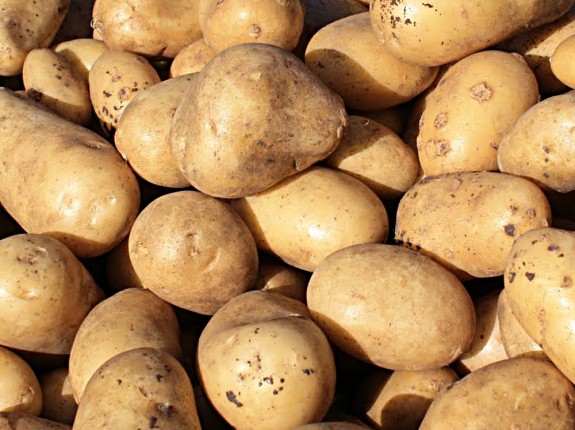Rather than being disappointed by the supermarket offering, learn how to grow early harvest potatoes in pots with Willy Newlands' advice
Our eagerness to enjoy new potatoes year-round has resulted in an often over-mature offering from the supermarket. Avoid disappointment by learning how to grow early harvest potatoes in pots, by following Willy Newlands’ advice.
For more, Egyptian walking onions make a useful and amusing addition to the vegetable bed. Learn how to grow Egyptian walking onions with our advice. And rhubarb is an excellent place to start as it is almost indestructible – read how to grow rhubarb: rescuing old plants.
HOW TO GROW EARLY HARVEST POTATOES
Maincrop potatoes may spend many weeks in storage, and a great deal can go wrong during those months in the dark.
It is said that McDonald’s revolutionised potato storage because its customers do not like dark chips. If conditions are not perfect in the potato store, the spuds turn some of their starches into sugars. Then, when the sugars go into the chip pan they turn brown and the customer says: “These fries are overcooked, mate!”
So major potato growers now put their crop into store in vast sheds with humidifiers and forced ventilation. This is a far cry from the simple field clamps of my boyhood, when the Kerr’s Pinks and King Edwards lay under a layer of straw and some heaped-up earth all winter and from which they emerged looking good, almost up to the arrival of the first of the new potatoes the following June.
The end result should be a better potato on the supermarket shelf; however, I have been disappointed with many shop-bought spuds recently – scabby, soft, with green patches and even covered in fast-growing sprouts. They are labelled as “new” and “baby” but, alas, they are often over-mature. Our craving for new potatoes all year round has tempted suppliers to attempt too many miracles, which is why it is so satisfactory to grow your own potted earlies.
It is worth pointing out that potatoes come in a rainbow of colours, from rosy pink to near black, but they should never be green. A green potato has been exposed to light and is pumping up its defences against bugs and predators; those defences are toxic, producing symptoms similar to food poisoning. Cooking does not destroy the toxins, so dump any green potatoes in the bin.
The only time you want to see a touch of green is when you are chitting your seed potatoes at the beginning of the season. From mid-winter onwards, your nurseryman will supply little potatoes showing the first signs of buds, typically forming a “rose” at one end of the tuber. These should be set out in a bright but frost-free place in February to encourage early growth. Egg boxes are ideal for keeping the potatoes upright and separate. In a week or two the dark-green or purplish sprouts will grow to a couple of inches (about 5cm) in length and your seed potatoes are ready to plant in a sack, dustbin or large pot.
THE IMPORTANCE OF TIMING
Timing depends on your level of frost protection. Potatoes will start into growth when the weather is still quite cool if sheltered under glass, perhaps given a layer of fleece during a sub-zero spell. But leaves that have been struck by frost go black and collapse. They will come again, but the setback can put the harvest date back by a fortnight or more. Since the idea is to bring forward the spring by a few weeks, it is important that frost is kept at bay.
The basics of growing potatoes in bags are quite simple. Put some compost, or a mix of compost and loam (molehills are perfect), in the bottom of the dustbin-sized bag. Into the first layer of compost, about a handspan deep, plant four chitted potatoes. Fill the bag up to the two-thirds level, then add a couple more potatoes and fill the bag to the top. Keep watered, but not overwatered, and give a fortnightly liquid feed.
After about 10 weeks, when the plants are flowering, you can start gingerly feeling around in the bag to see how your crop is coming on. It’s a great day when the first earlies meet the butter.
Thompson & Morgan, the Ipswich-based nurserymen, say that it is not necessary to “earth up” the growing potato plants in stages, just pop them into the compost and let them find their way up to the daylight. Experiments have shown that the crop develops just as strongly.
The bags are rather more convenient than dustbins, mainly because you can fold them up and tidy them away when the season is over. Maincrop potatoes are probably best in the open garden, where sunshine and rain make them fuss free. As for storage, one good idea is to boil, mash and freeze your crop. Simple.
RECOMMENDED VARIETIES
Red Duke of York, Winston, Charlotte and Anya can be highly recommended both for ease of cultivation and satisfaction on the table. Others that are widely available include Maris Bard, Swift, Epicure, Lady Christl, Rocket, International Kidney, Foremost, Sharpe’s Express and Arran Pilot. Many of these have low disease resistance but are suitable for growing in containers.





